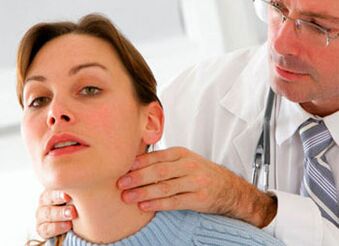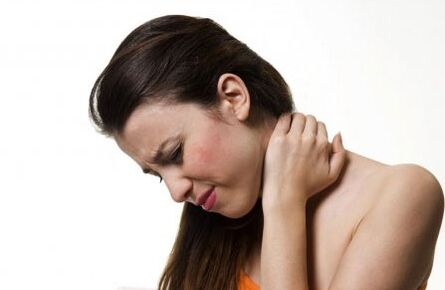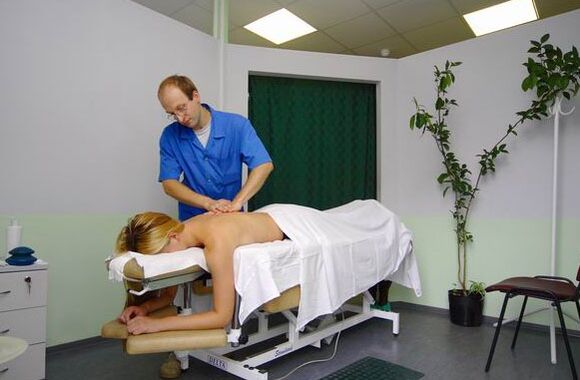Unfortunately, many people are familiar with osteonecrosis. This disease has become the real disease of the century. First of all, a sedentary lifestyle is the cause of osteosarcoma, of which most of us are becoming the norm. The second problem is an unbalanced diet and alcohol abuse. It is strange, but it is a food that has a direct effect on the condition of the spine.
The most common type of this disease is cervical osteonecrosis. The cervical spine is a particular risk area, as the size of the vertebrae here is smaller than in other areas of the spine. Also, the neck doesn't have a muscular corset like the rest of the back.
The development of cervical osteonecrosis

The danger is that at first a person often does not even realize that he is ill. In the early stages of the disease, the discs experience mild destructive effects - their elasticity decreases, the first small cracks appear, the height of the discs becomes smaller (as a result, nerve roots begin to form). pinched). There is a feeling of discomfort in the neck or pain.
If the first degree of osteonecrosis turns to the second, the pain will progress. This is due to the fact that the destruction of the discs continues to progress, leading to degenerative cervical vertebrae. The development of the disease may follow - the so-called falling head syndrome, which is characterized by severe pain. As a result, the patient has to support his or her head - in this position the pain becomes a little weaker.
The third degree of cervical osteochondrosis has some even more unpleasant symptoms: nausea, "low back pain" in the neck, dizziness, impaired hand sensitivity and, of course, pain.
Exacerbation of osteonecrosis of the neck and its causes
Exacerbations of the disease can occur at any stage. The reason for this is usually:
- Sudden movement, excessive physical activity, heavy lifting. If a person has osteonecrosis in the neck turning or tilting the head, it is not known exactly how their discs will react to this.
- Nervous and stressful situations. Often, stressful situations "trigger" diseases that are ingrained in us: cervical fibroids are no exception.
- A massage performed by a non-professional person. If you learn that you have osteonecrosis and go to a therapy session, it is your responsibility to alert the therapist about the disease. Otherwise, the consequences can be the most unpredictable. And of course, you cannot trust your back and neck to a masseuse who has doubts about his or her ability.
- Weather changes and hypothermia. Especially often there are exacerbations of cervical osteochondrosis in the fall.
- Take a shower during an exacerbation. On its own, taking a bath or sauna can be helpful, as a warm-up is often beneficial to the patient. But the desire to plunge into cold water or jump out into the cold will have to be given up, because osteonecrosis will not be slow to "thank you" but even worse.
- Elderly. Intervertebral discs tend to wear down over the years, so exacerbation in the elderly is not surprising.
- A neglected state of disease. If osteonecrosis is left untreated, exacerbations cannot be avoided.
Symptoms of an exacerbation

Symptoms of an exacerbation of cervical osteochondrosis can vary - it all depends on how advanced the disease is. These can be pain in the apex, decreased skin sensitivity in that area, pain in half of the neck, a feeling of heaviness in the tongue, and pain in the collarbone and shoulder.
During a particularly acute exacerbation, there may be respiratory failure and pain in the heart or liver region. If vertebral artery syndrome occurs, undulating headaches may occur, especially "pressing" on the eyes, temples, and ears. This occurs when an exacerbation of cervicitis causes pain only in the left half or only the right half, as occurs with migraines. Another indicator is the characteristic crackle in the back of the head when the head is tilted or rotated.
For vision and hearing, fog may appear before the eyes, flashing dots and spots. Tinnitus and dizziness cannot be ruled out.
If the pain extends to the arm, muscle strength may be impaired. You may also feel pain in your hands and fingers.
First aid for acute exacerbation of cervical osteonecrosis

Treatment of cervical osteonecrosis in acute exacerbations should be prescribed by a specialist. Therefore, if worsening of the condition occurs when you are alone at home, it is better to call your doctor. Before arrival, you should move minimally, the optimal solution is to lie in bed. You are allowed to take painkillers. These medications are designed to relieve pain and reduce inflammation in the spine.
In addition, the doctor can prescribe chondroprotectors - they will help prevent destructive processes occurring in the intervertebral disc. However, these drugs should be taken for a fairly long time - about six months. But they will help prevent the recurrence of osteonecrosis.
Muscle relaxants, pathological muscle relaxants will not be superfluous. Vasopressors, B vitamins, diuretics (with constant monitoring) and nootropic drugs are also commonly prescribed.
How long does the episode last?
Each person's exacerbation plays out in his or her own way. The same applies to the duration of the attack. If treatment for an exacerbation of cervical osteosarcoma is started promptly and properly, the peak is likely to subside after a few days. In more complex and advanced cases, the exacerbation period can last several weeks. If the illness is left untreated and the problem goes on, there's a big risk that a second exacerbation won't last long - in this case, the "calm" period will get shorter and shorter. To prevent this from happening, it is advisable to watch out for exacerbations.
How to reduce the chance of exacerbation recurrence?
A person who has had at least one exacerbation of cervical osteochondrosis and feels its "attraction" for himself should do everything he can to prevent repeat attacks. Treatment of cervical osteonecrosis during an exacerbation requires aggressive treatment, but not so that if the danger has passed, you can relax.

It is helpful to see an experienced massage therapist who must be informed in advance about problems with the neck. If you do not have the opportunity to sign up for a massage, you can limit your self-massage. To do this, it is recommended to perform stroking, kneading and vibrating movements in the neck area.
Finding a good chiropractor is a big deal. Therefore, if you know this, you can contact him. Treatment of exacerbations of cervical osteochondrosis, as well as preventive procedures, may include manual interventions such as the following:
- Relaxing massage, designed to relieve tension from tense muscles and warm them up well.
- Mobilization. The purpose of such an impact is to restore joint functions with the help of traction.
- Manipulation. Its essence lies in the fact that chiropractic creates a strong thrust into the problem area, resulting in the joint returning to its natural position.
Acupuncture can also be very helpful in preventing exacerbations of osteonecrosis of the neck. Naturally, only a specialist should perform such a procedure.
Diet also plays an important role. Patients should focus on foods rich in magnesium and calcium (that is, legumes, nuts, seafood, fish, and dairy products). You will have to give up drinking excessively, as alcohol tends to negatively affect the circulatory system that already suffers from cervical osteochondrosis.
Lifestyle of a person with cervical osteonecrosis
For daily life and daily routine, the following are recommended:
- Sleep on an orthopedic mattress with a small pillow under your head.
- Hot baths, saunas and hot baths are very helpful (except for the treatment of cervical spondylosis during an exacerbation).
- Swimming is very useful - it helps to relieve spasms and strengthens muscles.
- If you sit at work, you need periodic breaks to warm up. Also, even while sitting, try to change positions every fifteen minutes.
- Hiking is helpful, but it's better to limit running.
- Exercises, which aim to strengthen the muscles of the neck, are key to fighting osteonecrosis.
Like any other disease, fibroids need to be treated as soon as possible. If the disease just lurks and "shows its claws" when osteonecrosis has already begun to progress, don't despair. The tips above will definitely help you!

























